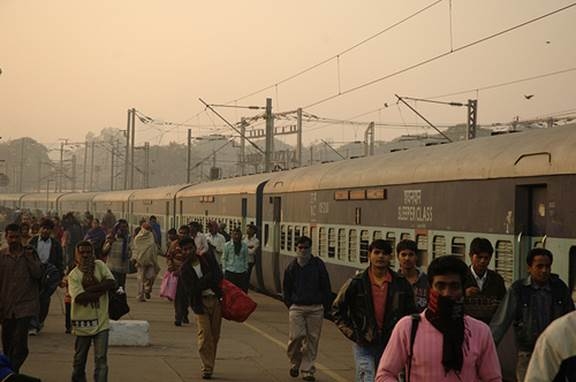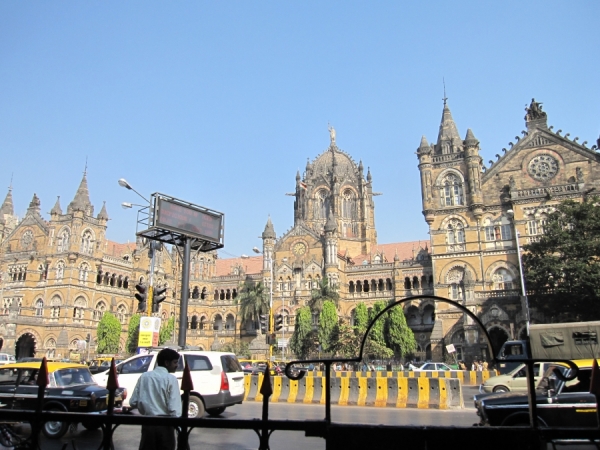Don't miss out on the best jobs!
Subscribe to HelpGoAbroad and weekly we will sent you an email with latest job posts. Provide your email address below
I slept on the top bunk in the sleeping car of a passenger train bound for Varanasi, India, an ancient city on the banks of the Ganges in the northern state of Uttar Pradesh. My friend slept below me on the lower bunk. Something had woken me up in the middle of the night, a movement near my feet, and as my eyes adjusted to the dim lighting I made out two huddled figures at the end of my bunk; two women wrapped in saris sharing the tiny space with me. I rolled over and looked below to find that my friend had three guests on her bed. Her eyes met mine with a mixture of bemusement and apprehension before I caught sight of the two dozen men lining the floor below me, every eye fixed on the two of us. All hopes of making it to the bathroom went out the window.
By dawn the mysterious crew of travelers had exited the train, whether they were discovered without tickets or had reached their destination I’m not sure. After an hour or so of forcing myself awake to protect my belongings that were underneath my head, I finally succumbed to sleep and prayed that I would wake up with everything I had gotten on the train with. Luckily, I did.
Traveling abroad in India can be a daunting, worrisome, and bewildering experience, and train travel is no exception. Your safety may be at risk. Your belongings may be stolen. All of my many excursions have been easy and harm-free, although I have heard a few horror stories. But Indian trains are by far the most scenic, comfortable, and engaging means of traveling the country and, with the right amount of diligence, your trip should be a breeze.
One of the most enlightening ways to see a country is from the local transport. Indian rail is the most common form of long-distance transportation, and there is a good chance you will be one of only a few English-speaking passengers in your rail car. In some countries it’s hard to break out of the tourism funnel and find your own path, as travel agencies make an effort to take advantage of the mass amount of travelers moving about. In Vietnam, for instance, the cheapest means of seeing the country is by booking open-ended bus tickets that only stop at a handful of tourist destinations. Taking the trains is not only more expensive, but more difficult to book. Hostels in Cambodia usually have a tourist agency in the lobby, with posters and prices plastered on most of the walls. Of course, anyone willing to put in the effort can find alternative options, but the convenience is hard to pass up. In India, on the other hand, the most comfortable, convenient, and inexpensive transportation is shared by locals and travelers alike.
The rail system was set up over 160 years ago during the British occupation of India, and is still to this day one of the largest and most intricate railways in the world. With over 7,000 stops throughout the country, you can book a ticket to just about anywhere you care to go. Many of the train stations still in use today were built in the 1800’s and are national landmarks; hallmarks of the fusion of European and Indian architecture. CST, formerly known as the Victoria Terminus, is a UNESCO World Heritage Site and fully-functioning terminal in Mumbai. Even if trains aren’t in the books for you when traveling abroad in India, visiting this monument shouldn't be left off of your itinerary.
Accommodations on the trains vary, as do the prices. For those with a little more cash to spend, AC1, 2 and 3 sleeper cars are air-conditioned and clean, and your bunk comes with a curtain and bedding. Sleeper cars (the most comfortable for low-budget traveling) have triple stacked open bunks in sets of six. Cleaning your bunk with a wet-wipe may be a good idea, unless you’re more of an out-of-sight, out-of-mind type person. In that case, you may not want to see what will come off. The upper bunks fold up during daytime so all six passengers (or more) can sit comfortably. No AC here, but most windows are still functional enough to open. In my opinion, a journey in the Sleeper Class is a perfect reflection of the price you pay: dirt cheap. It’s my first choice. For the ultra-budget travelers, Second Class seats are available, but there is no guarantee that you’ll have a seat at all, and on long-distance, overnight trips, it’s worth the few extra rupees.
The safety of you and your belongings is heightened when you spend more on an AC Sleeper. There is less traffic moving through these areas as the cost is prohibitive for most local travelers. In the Sleeper Class, I advise you keep all of your belongings on your bunk with you, as opposed to underneath the beds. I use my backpack as a pillow. Bring your own sleeping bag or sack (it can get cold in the winter), , plus it is nearly impossible for someone to snatch your money belt when it is tucked under your shirt and inside the sleeping bag. Be sure not to show any signs of wealth when traveling on trains. Designer clothes, jewelry, or nice shoes should certainly be kept out of sight.
There are other forms of transportation available to travelers in India. Hiring drivers and renting cars are more expensive, and sometimes the hassle and danger of driving yourself far outweigh the price. Flying from city to city is also more expensive, and there are many places to see that don’t have airports. Plus, the countryside is stunning and worth the extra time. Busses can sometimes be cheaper, but they are far less reliable and your comfort is not guaranteed. On one overnight trip from Mumbai to Goa, the storage space on our bus was sacrificed for boxes of produce and we had to sleep with our bags on our laps. On another, the bus driver decided to cancel our trip halfway through it, and we were dropped off on the side of the road at 2 am until another (already full) bus came by and stuffed us into the isle for the remainder of the journey. When it comes to traveling abroad in India, say yes to trains!
Sign in to publish a comment



Be the first to comment on this post.